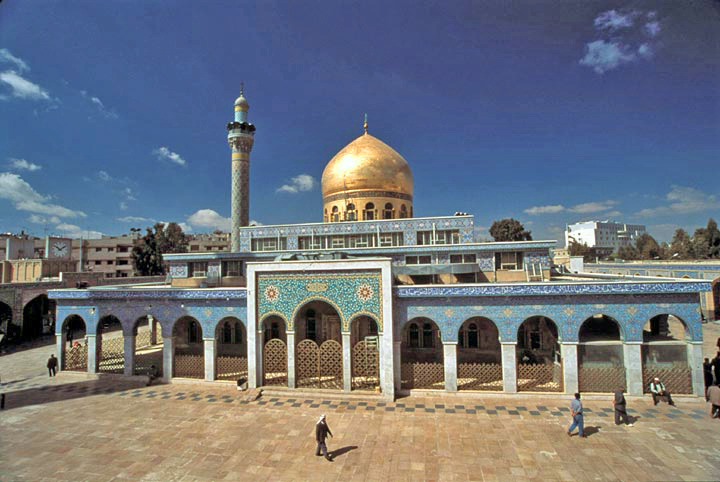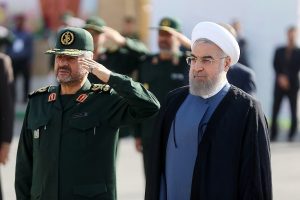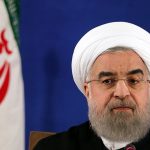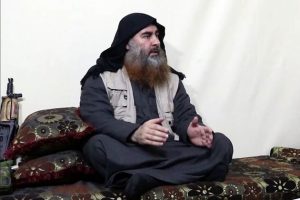by Fatemeh Aman
After long denying that it had deployed any foreign nationals to Syria, Iran now insists that Afghan and Pakistani Shia fighters have traveled to Syria in a spontaneous, voluntary display of religious and ideological conviction. Tehran claims that the deployment of Afghans in the “Fatemiyon” brigade and Pakistanis in the “Zeinabiun” brigade to Syria has nothing to do with financial benefits and other incentives offered to them, but instead has been based on what they see as their religious obligation to defend holy Shia sites in Syria. That may partially be true. However, by sending foreigners to Syria, Iran contributes to transforming the Syrian conflict into a Sunni- Shia religious war.
Javid Yousefi, an Afghan fighter who was killed in Syria, was introduced to the Fatemiyon brigade while staying in the city of Mashhad in Iran’s Khorasan province. Soon after, he applied for deployment to Syria. According to his mother, he was always looking for “martyrdom and war. Even before the Syria war, he was looking for a way to fight in Lebanon.” His wife rejects the idea that he went to Syria for financial benefit: “He was a plumber and plasterer and we didn’t have any financial issues.” In addition, she said, “the family has resided in Iran for a very long time and a visa was not an issue either.”
Iran’s newest propaganda around these Afghan and Pakistani fighters is a memoir of 40 stories of fallen fighters from the Fatemiyon brigade. It quotes one of the “martyrs”: “Assume this brigade and its fighters fight only for the sake of Islamic Republic goals, our answer would still be that we are ready for sacrifices.” The memoir continues: “the entire arrogant world is behind Saudi Wahhabis in order to destroy Shia. ISIS’s next target would be Iran if it gets powerful. We are ready to sacrifice ourselves to secure Islamic Iran. We will not forget that Islamic Iran helped us when the Taliban was aiming to destroy us…”
Over 2 million Afghan refugees, a big chunk of them Shias, have been living in Iran for over 3 decades. Although they are followers of Shiism [Iran’s official religion], this hasn’t protected them from various forms of discrimination. Ironically, the Syrian war may have given them the opportunity to be visible, recognized, or “viewed positively.”
Mohammad Falaki, a senior Islamic Revolutionary Guard Corps (IRGC) commander, who fought in the Iran-Iraq war in the1980s and currently is fighting in Syria, says: “In the past we would partly view these people [Afghans] as drug dealers, evil, or construction workers.” Referring to second- and third-generation Afghans, who have lived in Iran for over 30 years and are now fighting in Syria, he said that they fight “not for a tribe or race, but in support of the essence of being Shia… and their blood made them prove to us that we should have a positive view of the 3 million Afghans who live here.”
More than 2000 Afghans died fighting for Iran in its bloody war with Iraq in the 1980s. Some of them may have fought because of the incentives they received. However, it is conceivable that many of these people went to the frontline voluntarily based on their religious convictions.
Holy Sites in Shia Teaching
In general, for Shia Muslims, pilgrimage to holy sites is a serious business.
The Iranian city of Mashhad is home to the shrine of the eighth Shia Imam, Ali al-Rida. This most sacred place in Iran attracts over 12 million believers annually from around the world.
Shrines to some of the most prominent Shia leaders are located in Iraq. Chief among these is the shrine to Imam Hussein, the grandson of the Prophet Muhammad and the third Shia Imam, whose uprising in 680 ended with his death in battle at Karbala. Hussein is seen as a symbol of tragedy, martyrdom, resistance, and revolution. Pilgrimage to his grave in Karbala has always been one of the ultimate spiritual experiences for millions of Shias.
Annually, millions of Shia from around the world, including from Pakistan and Afghanistan, take a pilgrimage to Karbala. They mourn the death of the martyred Imam Hussein for ten days and with processions around his shrine. Suicide bombings and other security risks have not stopped people from making this pilgrimage.
Another Shia holy site is located in Damascus, the Sayyidah Zeinab Mosque. This is believed to be the burial place of Zeinab, daughter of Ali, the first Shia Imam. She is also known as “the hero of Karbala,” for her heroism in protecting the life of her nephew, Imam Ali b. Hussein Zayn al-Abidin, and other survivors of Hussein’s army.
Given their importance within Shia religious practice, it seems genuine that the Iranian government feels it has to protect these holy sites.
Between seven and 15 percent of Afghanistan’s population is Shia. They were oppressed under the Taliban and in some other periods of Afghan history and were not allowed to openly observe Shia rituals the way they are able to do now. The mourning ritual lasts ten days and is associated with chest-beating and self-flagellation, especially on Ashura (the tenth day of Muharram, the first day of Islamic year).
These are such holy places that many Shia believe if they die in one of them or on the way to one of them, they will be considered martyrs. Pilgrims pour cash or jewelry into the shrines, driving a gigantic charity business.
Iran Feels Threatened by Sunni Extremism
Iran’s Supreme Leader, Ayatollah Ali Khamenei, said in a meeting with the families of fallen fighters in Syria in February that “If these martyrs did not stop the enemy [in Syria and Iraq], we would have to fight with the enemy [Wahhabis and ISIS-like groups] in Kermanshah and Hamedan and other provinces,” implying that Iran’s presence in Syria is of a preemptive and proactive nature.
There is a genuine concern in Iran about growing Wahhabi influence in majority Sunni parts of Iran, such as Kurdistan province. Perhaps that fear explains Iran’s zero tolerance stance toward groups that it believes are affiliated with Wahhabism and ISIS. In August, 20 people were hanged for “crimes” ranging from “possessing arms” to organizing a takfiri terrorist group. Human Rights groups condemned the killings.
If Iran’s aim was, as Mohammad Falaki stated, to form a “Shia Freedom Army,” drawn from all nations in the world, in Syria, under the command of IRGC Qods Force commander Qasem Soleimani, that goal may have been achieved. This army, Falaki went on to say, has many fronts, “in Syria, in Iraq, and in Yemen. This army is not supposed to be made up solely of Iranians. The army will be formed and organized by the local people in any region that needs such an army.”
Iran’s presence in Syria may be more religiously motivated than political. However, Falaki’s mention of Yemen, where there are no holy Shia sites to protect, does not support this claim.
Khamenei has stated several times in the past that Iran is Syria’s “strategic depth” and supports Syria on a variety of issues that have little to do with protecting Shia pilgrimage sites.
In May, Ali Akbar Velayati, Khamenei’s advisor on international affairs, called Syrian president Bashar al-Assad a “wise leader” and expressed Iran’s full support for him. However, when trying to encourage young people to join the fight in Syria, Iranian authorities have focused on the idea of defending the holy shrines, and are carefully avoiding the suggestion that Iran’s presence in Syria is really aimed at supporting Assad.
Sending Afghans and other nationals to Syria could be an attempt to form a broad and multi-national Shia alliance in Syria by giving it a powerful religious justification.
Iran long denied the broad scope of its presence in Syria, portraying its deployment as nothing more than a limited number of military advisers. Large numbers of Iranian casualties in Syria could put the regime under pressure both in Iran and abroad. Large numbers of Afghan casualties, however, have limited consequences for Iranian authorities. There has been an outcry from human rights organizations over the use of these Afghan fighters, but no serious protest from the Afghanistan government or the Afghan community in Iran.
The serious consequence of deploying Afghans to Syria may not take the form of an official protest from Kabul, and may not even have much to do with Syria. It may, however, expand the violence against Afghanistan’s Shia population in what is a majority Sunni society. Iran’s presence in Syria, including its deployment of foreign nationals, has so far deepened the Shia-Sunni rift in the region even further, and, ultimately, this is not in Iran’s best interest.
Photo: the Sayyidah Zeinab Mosque in Damascus






I’d ‘Googled’ her but didn’t find that information… thanks. Again, confirmatory of a pro-U.S. bias.
“The mourning ritual lasts ten days and is associated with chest-beating and self-flagellation, especially on Ashura (the tenth day of Muharram, the first day of Islamic year).”
Tenth day of Muharram is NOT the first day of Islamic year. It is the FIRST day of Muharram.